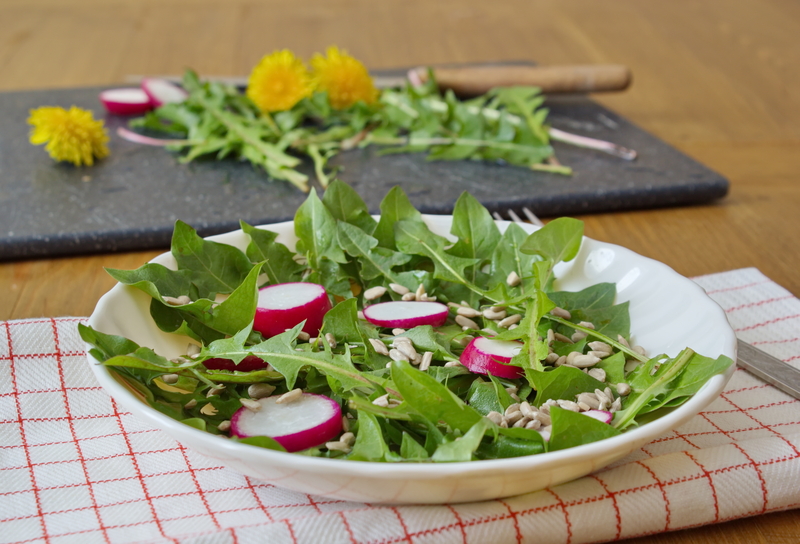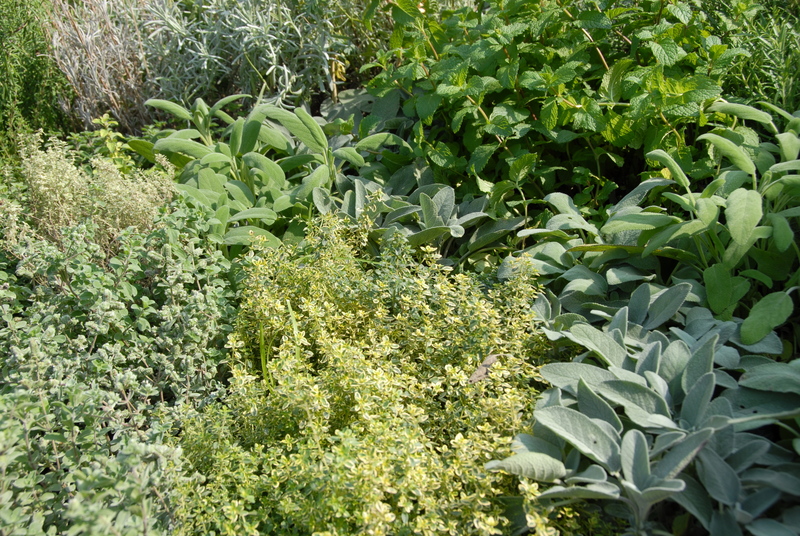Mastering Artistic Hedge Trimming Shapes and Tactics
Posted on 26/08/2025
Mastering Artistic Hedge Trimming Shapes and Tactics: A Comprehensive Guide
Are you fascinated by topiary masterpieces and dream of transforming your own garden into a living work of art? Artistic hedge trimming--also known as art topiary or creative hedge sculpting--unlocks endless possibilities in landscape design. From whimsical animal figures to stately geometric patterns, mastering artistic hedge trimming shapes and tactics requires both imagination and know-how.
In this in-depth, SEO-optimized article, we'll explore essential strategies, popular shapes, step-by-step techniques, recommended tools, and advanced tactics for taking your hedge artistry to the next level. Whether you're a gardening enthusiast or a landscaping professional, this guide will empower you to create eye-catching hedges that elevate your outdoor space.

Understanding the Art of Hedge Trimming
Before you attempt any creative hedge shapes, it's crucial to grasp the fundamentals of hedge growth and maintenance. Artistic hedge trimming combines horticultural knowledge with aesthetic vision, resulting in living sculptures that suit your landscape's unique flair.
The History and Significance of Artistic Topiary
Topiary art dates back millennia, with roots in ancient Roman villa gardens and peak popularity in formal European estates. Throughout history, carefully pruned shrubs symbolized wealth, precision, and creativity. Today, mastering artistic hedge trimming allows anyone to channel this tradition, turning ordinary greenery into bold statements or whimsical features.
Why Pursue Mastery in Creative Hedge Trimming?
- Visual Impact: Artistic hedges become garden focal points and conversation starters.
- Personal Expression: Transform your outdoor space with shapes that reflect your style, hobbies, or brand.
- Environmental Benefits: Healthy, well-shaped hedges improve privacy, reduce noise, and support local biodiversity.
- Property Value: Unique and well-maintained landscape features can significantly enhance curb appeal.
Essential Tools and Preparation for Hedge Artistry
The foundation of superb hedge trimming artistry is preparation. The right tools not only ensure clean cuts but allow for finer detail in elaborate designs.
Recommended Hedge Trimming Tools
- Hedge Shears: For precise, broad cuts and straight lines.
- Pruning Secateurs: For detail work, shaping, and thinning out intricate areas.
- Electric or Battery-Powered Trimmers: Excellent for efficiently tackling large surfaces before refining the details by hand.
- Shaping Frames or Templates: Wire frames or cardboard cutouts can guide complex patterns or repeatable motifs.
- Ladders and Safety Gear: Ensure safety when working on tall or wide hedges. Protective gloves and goggles are a must.
Tip: Always keep your tools razor-sharp. Clean blades between plants to avoid spreading disease and guarantee clean, healthy cuts.
Selecting the Right Hedge Species for Artistic Trimming
Not all shrubs are created equal for sculpting. Choose plants that are resilient to regular pruning, have dense foliage, and re-sprout rapidly from old wood.
- Boxwood (Buxus sempervirens): The gold standard for classic topiary due to its slow, dense growth.
- Yew (Taxus baccata): Flexible and long-lived, perfect for both traditional and inventive designs.
- Privet (Ligustrum spp.): Fast-growing and forgiving, ideal for beginners.
- Holly (Ilex), Hornbeam (Carpinus), and Lonicera: Great for more advanced shapes and barrier hedges.
Popular Artistic Hedge Trimming Shapes
When mastering creative hedge sculpture, start with classic forms before progressing to complex subjects. Here are the most sought-after styles:
1. Geometric Forms
Cube, sphere, cone, and pyramid shapes are mainstays in traditional gardens. Their crisp lines and timeless aesthetic lend elegance to any landscape.
2. Spirals and Waves
Ambitious gardeners often attempt spirals, corkscrew columns, or undulating waves--requiring both patience and a keen eye for symmetry. Begin with a simple spiral and increase complexity as your skills progress.
3. Animal and Motif Topiary
From rabbits to dragons, animal shapes are topiary's show-stopping centerpiece. Other motifs--hearts, symbols, or monograms--make your garden uniquely personal.
4. Living Screens and Arches
Arched hedges, tunnels, and leafy pergolas provide practical beauty, offering shelter, privacy, and intrigue to pathways and boundaries.
Step-by-Step Techniques for Artistic Hedge Trimming
Let's dive into a detailed workflow for successful, creative hedge trimming:
1. Planning and Visualization
- Sketch your design on paper or use digital visualization tools.
- Use stakes, string, or wire frames to mark out guidelines on your hedge.
- If creating animals or motifs, consider starting with a wire framework for reference.
2. Rough Shaping
- Start by trimming away major overgrowth to achieve a more uniform shape.
- For geometric figures, follow your guides closely, making gradual, shallow cuts.
- It's better to remove less at first; you can always trim more, but you can't replace overzealous cuts!
3. Refinement
- Step back frequently to assess symmetry and form.
- Refine sharp edges and smooth out any bumps for a polished appearance.
- Use secateurs or smaller shears for detailed areas and curves.
4. Detailing and Perfection
- Highlight features by thinning dense areas or trimming closer to the frame for a dramatic silhouette.
- Pay attention to the plant's natural light direction--this can impact how shadows play across your sculpted shapes.
- After finishing, tidy up fallen clippings to allow sunlight to reach your trimmed hedge.
5. Ongoing Maintenance
- Trim lightly every few months to maintain shape, as opposed to infrequent heavy cuts.
- Fertilize, water, and monitor for pests or diseases.
- Revisit your vision each season, making small adjustments as your topiary matures.
Advanced Tactics for Master-Level Hedge Sculpting
For gardeners who have honed the basics, advanced artistic hedge trimming tactics can elevate your green creations into award-worthy displays.
Layering and Depth Creation
Go beyond 2D silhouettes--create multi-level or "layered" effects by fashioning different sections at varying depths. This lends hedges a sense of movement and three-dimensional intrigue, particularly compelling in animal or figurative topiary.
Color and Texture Contrasts
Mix different species or variegated leaf types within a single design. Contrasting shapes and foliage textures help emphasize detail and amplify impact.
Integrating Architectural Features
Fuse your hedge sculptures with stone, woodwork, or metal art for stunning visual synergy. For example, a well-trimmed hedge archway paired with a wrought-iron gate creates an inviting, storybook entrance.
Training for Espalier and Customized Growth
Espalier--training shrubs to grow flat against a surface--can merge geometric precision with practical design for walls and fences. Use supports and regular pruning to coax plants into intricate lattices, fans, or unique logos.
Solving Common Challenges in Creative Hedge Trimming
Irregular Growth or Bald Spots
Manage patchy hedges by selective pruning, feeding, and (if necessary) infill planting. Never cut too deep into bare branches; some species may not recover.
Poor Precision or Symmetry
Always use guides, measuring tools, and step back regularly. Take photos from different angles to spot inconsistencies early and adjust as needed.
Weather and Seasonal Considerations
Trim most hedges during late spring or early summer--avoid pruning in harsh winter or periods of extreme heat. Moisture stress can lead to dieback and deformities.
Year-Round Hedge Care for Lasting Artistry
- Spring: Begin major trimming and shaping as new growth starts.
- Summer: Maintain shape with light touch-ups; deepen detail as leaves mature.
- Autumn: Remove dead or diseased sections and fertilize to boost winter resilience.
- Winter: Prune only if necessary. Clear snow loads gently to protect fragile shapes.
Feeding and Pest Management
Apply balanced fertilizer in early spring. Inspect regularly for aphids, scale, or fungal issues--proactive care preserves both the health and aesthetic integrity of your hedge sculptures.

Inspiration from Iconic Hedge Art Around the World
- Levens Hall (UK): Europe's oldest topiary garden, featuring labyrinthine geometric designs and legendary living chess pieces.
- Marqueyssac Gardens (France): A fantasyland of swirling boxwood shapes and undulating waves perched atop a cliff.
- Disney Parks: Whimsical cartoon characters brought to life as hedge sculptures, demonstrating the creative limits of topiary are boundless.
Studying these masterpieces can fuel fresh ideas and set new goals on your journey to hedge artistry mastery.
Conclusion: Become a Maestro of Artistic Hedge Trimming
Mastering artistic hedge trimming shapes and tactics is a rewarding path that brings practical benefits and unleashes your creative spirit. By combining knowledge, planning, precision, and patient care, even beginners can achieve spectacular results with living sculptures.
- Practice essential geometric and freeform shapes for confidence.
- Choose robust, suitable plants for optimal health and flexibility.
- Invest in sharp, reliable tools, and pay attention to feeding and maintenance year-round.
- Push boundaries with advanced tactics and integrate personal flair into your designs.
Whether you're aiming for classic elegance or playful modern creations, creative hedge trimming transforms your garden into an ever-evolving gallery. With each season, your masterpieces will only grow more stunning. Begin shaping your green canvas today!

